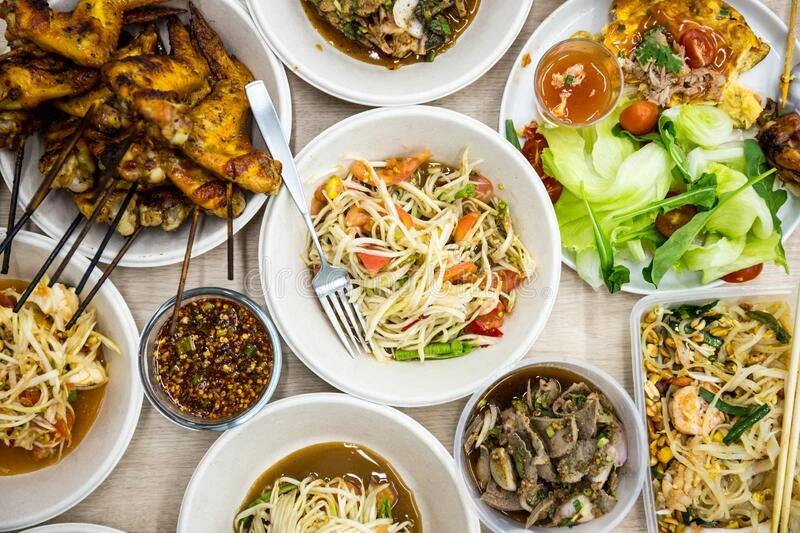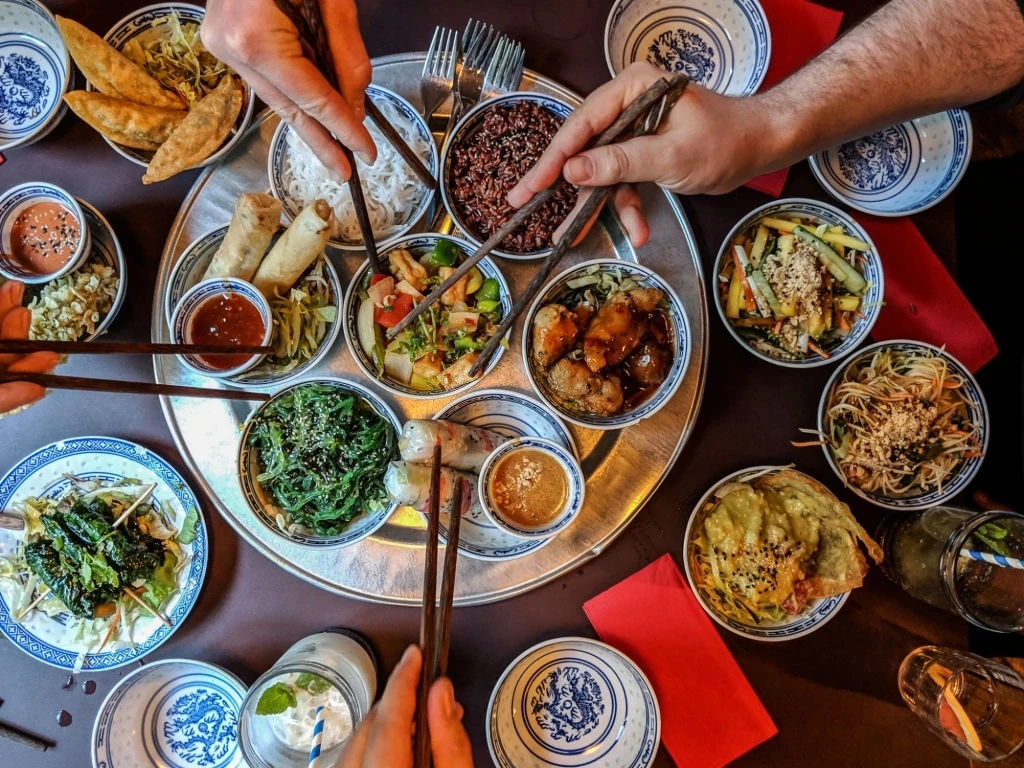
1
The Flavors of Thai
Discovering Northeastern Thai Cooking
Northeastern Thailand, also known as Isan, boasts a culinary style that is both vibrant and aromatic, distinguished by its unique ingredients, flavors, and cooking techniques. This region, bordered by Laos and Cambodia, has a rich cultural heritage that is beautifully reflected in its cuisine. Let’s embark on a journey to explore the essence of Northeastern Thai cooking and understand why it stands out in the world of gastronomy.
The Essence of Isan Cuisine
Isan cuisine is characterized by its bold and pungent flavors, achieved through the use of fresh herbs, spices, and traditional cooking methods. Unlike the more well-known Central Thai cuisine, which is often sweet and rich in coconut milk, Isan food is known for its simplicity, heat, and sourness.
Key Ingredients
1. Sticky Rice (Khao Niao): A staple in every Isan meal, sticky rice is preferred over the jasmine rice commonly found in other parts of Thailand. It is steamed and often eaten by hand, forming the base of many dishes.
2. Pla Ra (Fermented Fish): This pungent ingredient is made by fermenting fish with rice bran or roasted rice powder, resulting in a strong, distinct flavor that defines many Isan dishes.
3. Chilies: Fresh and dried chilies are used extensively to add heat and depth to the dishes.
4. Lime: The juice and zest of lime are used to bring a tangy freshness to salads and soups.
5. Herbs and Spices: Fresh herbs such as cilantro, mint, Thai basil, and galangal are integral to the cuisine, along with spices like lemongrass and kaffir lime leaves.
Popular Dishes
1. Som Tum (Papaya Salad): A quintessential Isan dish, Som Tum is a spicy salad made from shredded green papaya, chilies, lime, fish sauce, and sometimes fermented fish. It is a perfect balance of spicy, sour, salty, and sweet.
2. Larb (Minced Meat Salad): Often made with pork, chicken, or beef, Larb is a flavorful salad that combines minced meat with lime juice, fish sauce, herbs, and roasted rice powder. It is served with sticky rice and fresh vegetables.
3. Gai Yang (Grilled Chicken): Marinated in a mixture of herbs and spices, the chicken is grilled to perfection and often served with a spicy dipping sauce and sticky rice.
4. Nam Tok (Waterfall Salad): Similar to Larb, this dish is made with grilled meat, usually beef, that is sliced thinly and mixed with a tangy dressing of lime juice, fish sauce, chilies, and fresh herbs.
Cooking Techniques
Northeastern Thai cooking techniques are simple yet effective, emphasizing the natural flavors of the ingredients. Here are some of the common methods:
Grilling and Roasting
Grilling and roasting are prevalent in Isan cuisine, with dishes like Gai Yang showcasing the smoky, charred flavors that come from cooking over an open flame. This method is often used for meats and vegetables, imparting a distinctive taste that is both rustic and aromatic.
Fermentation
Fermentation plays a significant role in Isan cooking. Pla Ra, the fermented fish sauce, is a key example. This process not only preserves the fish but also enhances its flavor, adding a complex, umami-rich note to dishes.
Pound and Mix
Many Isan dishes involve pounding ingredients together in a mortar and pestle. This technique is used to make Som Tum and Larb, where the pounding helps to blend the flavors of the ingredients thoroughly, creating a harmonious and intensely flavorful dish.
Steaming
Steaming is another common technique, especially for sticky rice. The rice is soaked and then steamed in a bamboo basket, resulting in a chewy and aromatic texture that pairs well with the bold flavors of Isan dishes.
The Cultural Significance
Isan cuisine is deeply rooted in the culture and lifestyle of the region. Meals are often communal, with dishes shared among family and friends. The food reflects the agricultural heritage of Isan, where farming and fishing are primary occupations. This connection to the land and local produce is evident in the freshness and simplicity of the cuisine.
Eating Habits
In Isan, meals are typically eaten with sticky rice, which is rolled into small balls and used to scoop up food. This practice highlights the tactile and communal nature of dining in the region. The use of fresh vegetables and herbs not only adds flavor but also makes the meals nutritious and balanced.
Festivals and Celebrations
Food plays a central role in Isan festivals and celebrations. Dishes like Som Tum and Larb are often prepared for special occasions, reflecting the importance of food in bringing people together. The vibrant flavors and aromatic dishes serve as a celebration of the region’s cultural heritage.
Modern Influences and Global Appeal
While traditional Isan cuisine remains popular in Thailand, it has also gained international recognition. The bold flavors and unique ingredients have captivated food enthusiasts around the world. Modern chefs are experimenting with Isan flavors, incorporating them into contemporary dishes and fusion cuisine.
Global Influence
Isan restaurants and food stalls are now found in major cities worldwide, introducing the vibrant and aromatic style of Northeastern Thai cooking to a global audience. This international exposure has led to a growing appreciation for the distinct culinary heritage of Isan.
Adaptation and Innovation
Modern chefs are not only preserving traditional recipes but also adapting them to suit contemporary tastes. By blending Isan flavors with global ingredients and techniques, they are creating innovative dishes that honor the essence of Isan cuisine while appealing to a broader audience.
Conclusion
The vibrant and aromatic style of Northeastern Thai cooking offers a unique culinary experience that is both rich in flavor and steeped in tradition. From the pungent and spicy Som Tum to the smoky and savory Gai Yang, each dish tells a story of the region’s cultural heritage and agricultural roots. As Isan cuisine continues to gain global recognition, it remains a testament to the power of food in connecting people and celebrating cultural diversity.
Whether you’re a seasoned foodie or new to Thai cuisine, exploring the flavors of Isan is sure to be a delightful and enriching journey.


